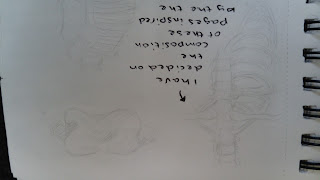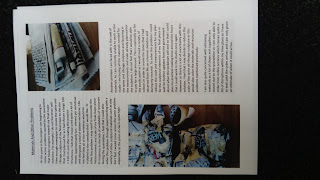Spine Sculpture Evaluation

I feel that the textures on this spine sculpture are very successful as they are similar to that of the bones that I have studied from life and create a sense of contrast between the areas of shadow and highlighted bone. I feel that the dry brush application technique was a successful choice as it creates an almost fossilised feel to the sculpture which I am very inspired by as I had referenced tones of fossilised and aged bones when mixing tones to incorporate within the sculpture. The choice to use mod-roc as a sculptural material was quite successful as the already textured properties of the mod-roc added layers of depth and dimension to the piece which when paired with the dry brush technique created an interesting surface for the viewer. I feel that the scale of the sculpture is successful as I am normally quite content within my comfort zone of small scale pieces, so I was able to explore new sculptural mediums within my final major project. However when the spine sculpture i...

















